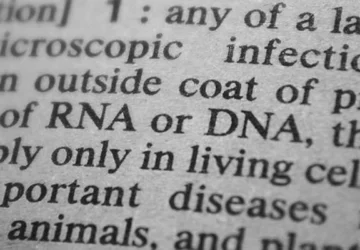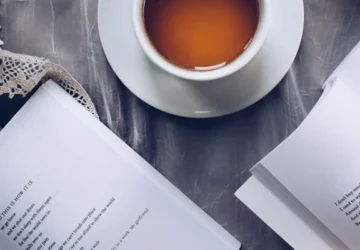
Preparing for Exams Using Books and Study Guides
It is the most dreaded and familiar ritual in academic life. It is 1 a.m. The exam is in eight hours. You are surrounded by a wall of open textbooks, and your eyes are scanning a highlighted page for the tenth time.
You recognize the words. They feel familiar, like an old song. But when you close your eyes and try to explain the concept, there is nothing. A complete, terrifying blank.
This is the “Familiarity Trap,” and it is the single biggest reason why students who study for hours still fail their exams.
The problem is not a lack of effort. It is a fundamental misunderstanding of preparing for exams. We have been trained to confuse two completely different cognitive states: recognition (passive familiarity) and retrieval (active mastery).
This guide is not a list of “study hacks.” It is a strategy. It is about understanding that your books and study guides are two completely different tools, designed for two different jobs. One is a library. The other is a gymnasium.
Here is how to stop reviewing and start learning.

The Familiarity Trap: Why “Rereading” Is the Worst Study Method
For most students, “studying” is one thing: rereading. They reread the textbook. They reread their lecture notes. They reread the study guide.
Decades of cognitive psychology research (including foundational work by Robert Bjork at UCLA) have proven that rereading is one of the least effective study strategies ever invented. It is passive. It is lazy. And it is deeply deceptive.
Rereading creates a powerful “illusion of knowing.”
When you read a passage for the first time, your brain works hard to “encode” it. When you read it a second, third, or fourth time, the processing is fluent and easy. Your brain says, “Ah, I know this! This is familiar.”
But this feeling of “fluency” is a cognitive trap. You are not practicing the skill the exam will test. The exam will not ask you to recognize the information. The exam will ask you to produce it, from scratch, in a high-pressure environment.
You have spent 10 hours practicing recognition. You have spent zero hours practicing retrieval.
This is why you can look at your notes and feel confident, then sit down for the exam and feel panic. You have trained for the wrong sport.
True studying is not about input (pushing information into your brain). It is about output (forcing your brain to pull that information out).

The Right Tool for the Right Job
To escape the familiarity trap, you must first understand the tools you are using. A student’s tragic mistake is using the textbook for “studying” and the study guide for “reviewing.”
You must do the exact opposite.
The Textbook: Your “Database” (For Initial Learning)
Your textbook is a library. It is a vast, detailed, and comprehensive database of information.
Its role is for the first time you learn a concept. This is your “learning” phase, which happens weeks before the exam (as we discussed in our guide on “How to Read a Textbook”). You use it to understand the “what” and the “why.” You read the chapter, take notes (using the Cornell or Zettelkasten method), and get the big picture.
But once this initial learning phase is over, you should close the textbook.
For exam preparation, the textbook is the worst tool. Opening it is an invitation to fall back into the passive, deceptive comfort of rereading. It is your “reference” library, not your “study” tool.
The Study Guide: Your “Gymnasium” (For Active Preparation)
The study guide is the opposite. It is not a library; it is a gymnasium. Or, more accurately, it is an “exam simulator.”
Its only purpose is to force retrieval.
A well-designed study guide (whether made by your professor, a publisher, or you) is not a summary. It is a set of prompts. It is a collection of key terms, “big questions,” and practice problems.
You do not “read” a study guide. You “do” it.
Its purpose is not to teach you the material. Its purpose is to test you, to expose your weaknesses, and to force your brain to practice the exact skill it will need on exam day.

The Active Retrieval Strategy: How to “Do” a Study Guide
This is where you win the exam. This is the shift from passive to active.
“Active Retrieval” (or “practice testing”) is the single most effective study strategy ever discovered. It is the act of forcing your brain to retrieve information “cold.” This “struggle” (what researchers call “desirable difficulty”) is what builds the neural pathway. It is the “weightlifting” that makes the memory stronger.
Here is how to study for exams using this principle.
1. Treat the Study Guide as the Exam. Take your study guide, which is full of key terms (e.g., “The Central Dogma,” “Hegemony,” “Ad Hominem”). Take a blank sheet of paper (or open a blank document). Now, without looking at your textbook or notes, try to define and explain every single concept on that guide.
You will fail. A lot. You will hit a term and your mind will go blank.
This is good. That feeling of “Ugh, I don’t know this!” is not a sign of failure. It is the moment of learning. You have just identified a gap.
2. Turn Every Prompt into a Question. Do not just “look at” a key term. Force your brain to engage.
-
Study Guide says: “The Battle of Hastings.”
-
Your brain must ask: “When was it? Who fought? Why did it happen? What was the long-term consequence?”
-
Study Guide says: “Mitochondria.”
-
Your brain must ask: “What is its function? What process occurs there? What is its structure?”
3. Use Spaced Repetition (The “Pile Method”). This is a simple, powerful technique.
-
Get a stack of index cards. Write every key term or question from your study guide on a separate card.
-
Go through the stack. If you can retrieve the answer instantly and correctly, put it in the “Mastered” pile.
-
If you struggle, or get it wrong, put it in the “In-Progress” pile.
-
If you completely blank, put it in the “Clueless” pile.
Your study session is now defined. You will spend all your time on the “In-Progress” and “Clueless” piles, actively battling to move them into the “Mastered” pile. You will waste zero time “rereading” the concepts you already know.
4. Simulate the Conditions. Do not study with music on, lying in bed, with your phone next to you. Go to the library. Sit at a desk. Set a timer. Put your phone in your bag. Practice “retrieving” the information in the same “closed book,” high-focus environment as the exam itself.

“Surgical” Review: The Right Way to Use Your Textbook
You have just spent an hour with your study guides, and you have identified 10 “Clueless” items. You failed to retrieve them. Now you are allowed to open your textbook.
But you do not reread it. That is a sin.
You will now perform “surgical” review. You open the books to the exact page (using the index) that discusses the single concept you failed to retrieve. You read only that paragraph. You read it to find the answer to the question you failed.
You find the answer. You understand it. You close the book.
You take out a blank piece of paper and, from memory, write out the explanation in your own words. (This is the Feynman Technique, another form of active retrieval).
That’s it. You have identified a gap, located the information, and actively processed it. You have not fallen into the “Familiarity Trap.” You have not wasted 45 minutes rereading the entire chapter you already mostly know.
You have used the textbook as a “scalpel,” not a “sledgehammer.”
You Don’T “Study” for an Exam. You “Train” for It.
Preparing for exams is not a passive act of information consumption. It is an active, aggressive, and strategic act of “training.”
Your books are the library where the knowledge is stored. Your study guides are the gym where you build the mental muscle.
The student who fails is the one who spends 10 hours in the library, passively rereading. The student who succeeds is the one who spends 10 hours in the gym, actively “lifting the weights” of active retrieval.
Stop rereading. Start retrieving. Stop “studying.” Start “testing.” Stop hoping for familiarity. Start demanding mastery.
Recommended for you

Sci-Fi vs Fantasy: Key Differences and What to Read
On the surface, the difference seems simple. One genre has spaceships and aliens. The other has dragons and elves. Science Fiction, we are told, is about the future, and Fantasy is about the past. This is a shallow analysis. And it is wrong. This “aesthetic” definition one of props and settings collapses immediately under any […]

Molecular Biology and the Books That Defined It
What is life? For millennia, this question was the domain of priests, philosophers, and poets. It was a question of “spirit,” of a “vital spark,” of a “ghost in the machine.” Then, in the middle of the 20th century, a new group of thinkers took over. They were physicists, chemists, and biologists, and they approached […]

How to Become More Productive: Step-by-Step Guide
In one afternoon, a small team can draft a long-form article, auto-generate matching social graphics, and cut a 60‑second explainer video—without touching traditional timelines or hiring a studio. The shift isn’t hype: AI tools now turn plain text into publish-ready visuals, videos, and SEO-optimized pages, compressing days of manual work into hours. If your goal […]

Books Every Student Should Read Before University
University is not just the next step after school. It is a fundamentally different kind of intellectual environment. High school often rewards memorization and acceptance of authority. University, at its best, rewards questioning. It is not just about learning what to think; it is about learning how to think. It is about engaging with complex, […]

Why Poetry Is Gaining Popularity Among Young Readers
There is a paradox in the modern literary world. For decades, the narrative has been consistent: literacy is in decline, attention spans are nonexistent, and young people, in particular, do not read. Book sales are stagnant. The novel is fighting for its life against Netflix and TikTok. And yet, in the middle of this supposed […]

What Is Close Reading and Why It Matters in Modern Education
We are drowning in words. We read more today than at any other point in human history. We scroll through articles. We skim headlines. We digest hot takes, social media posts, and endless comment threads. Our brains, rewired by the digital age, have become incredibly efficient at one specific skill. Skimming. We have trained ourselves […]

Travel Through Pages: Literature for Explorers
What defines “literature for explorers”? The easy answer is a story about a journey. A book that moves, that chronicles a voyage from a safe harbor to a wild, unknown land. We think of travelogues, memoirs, or survival stories. But this definition is incomplete. It’s too literal. A true story for explorers is not just […]

What Is Reading Fluency and How to Improve It
Ask someone what is reading fluency, and they will likely give you a simple answer: “It means reading fast.” This answer is understandable. It is intuitive. But it is also dangerously incomplete. Reading fluency is not a race. It is not about simply processing words at maximum velocity. True fluency is a complex skill, a […]